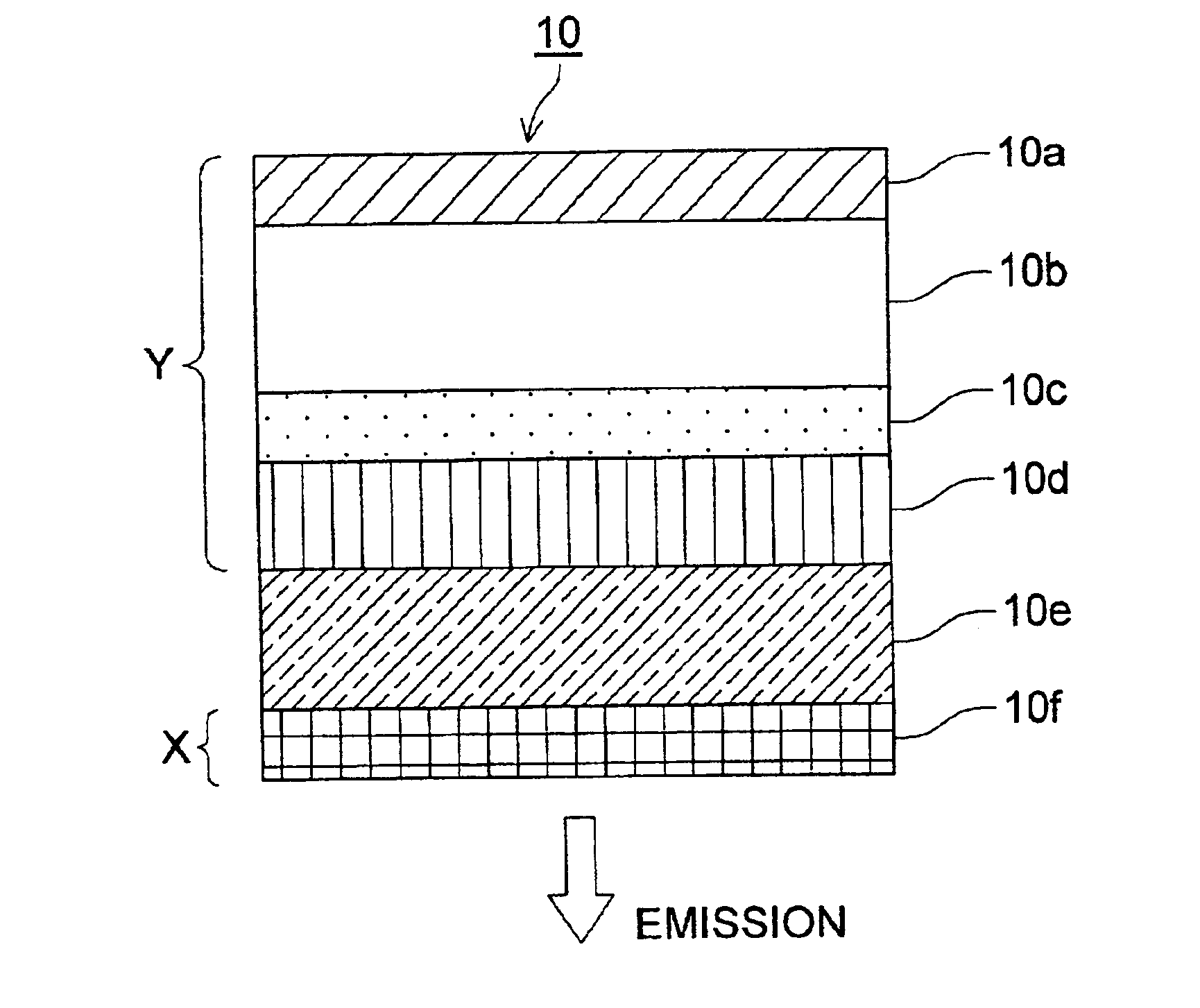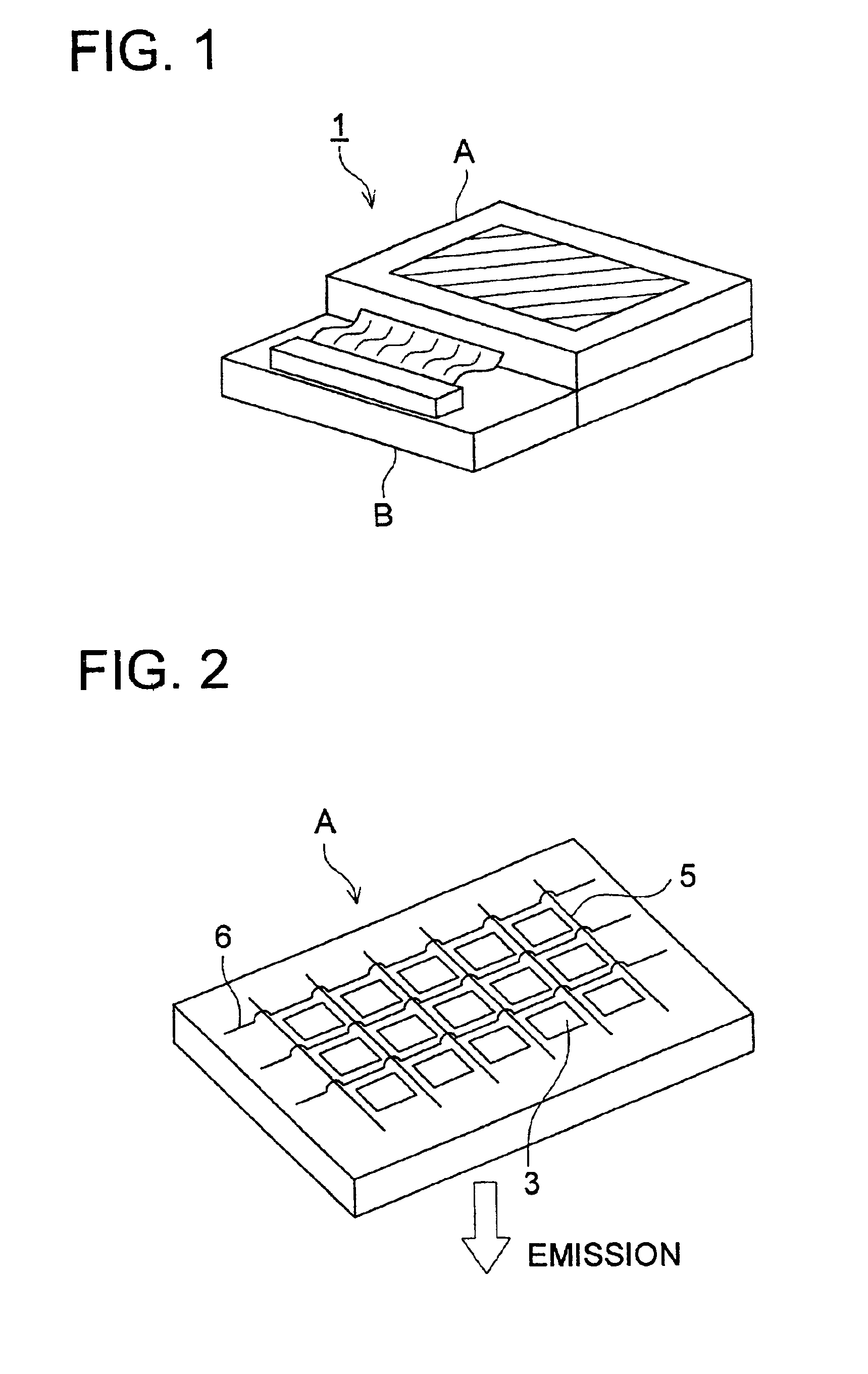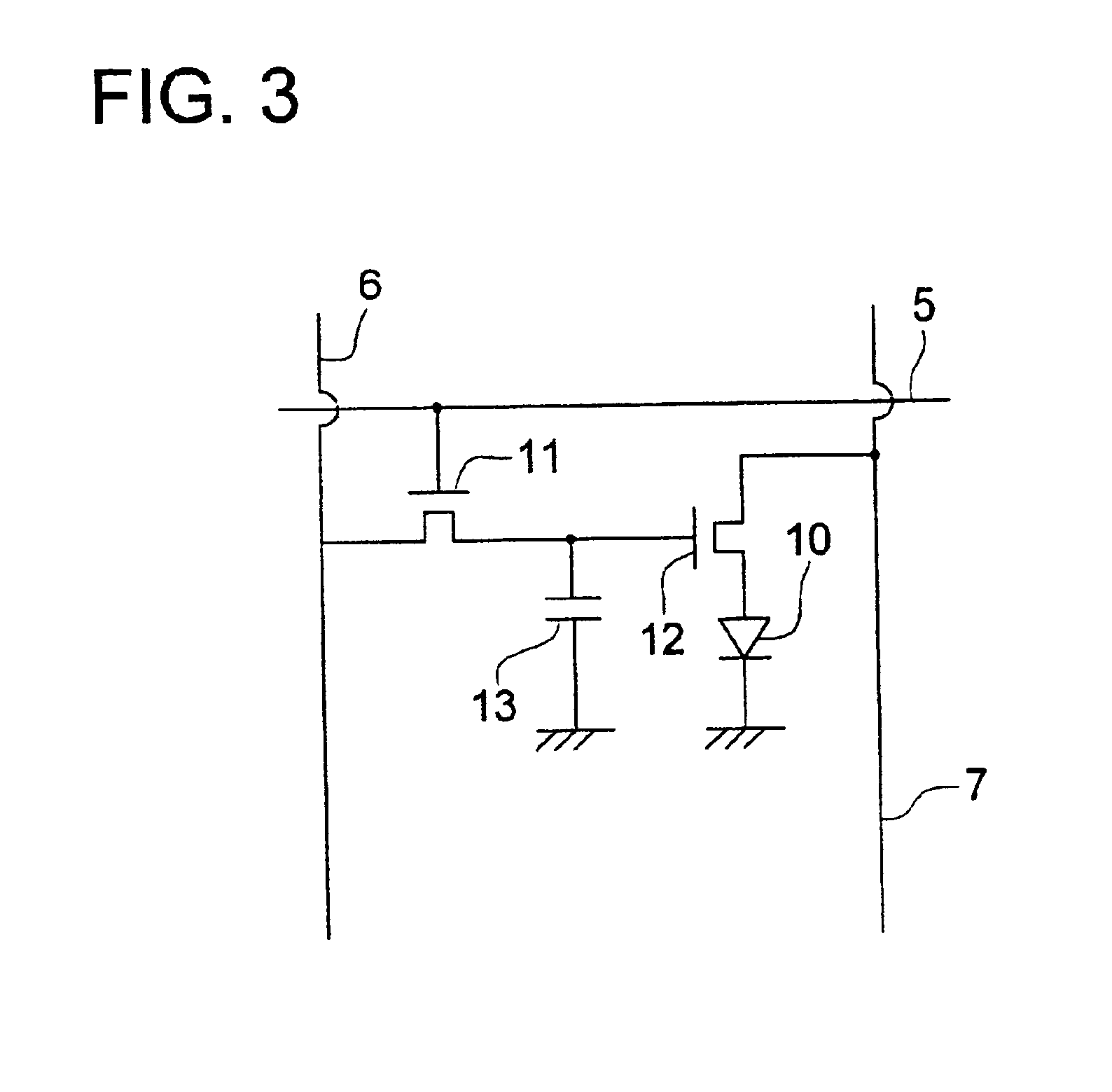Organic electroluminescent element, displaying apparatus, light emitting method, displaying method and transparent substrate
- Summary
- Abstract
- Description
- Claims
- Application Information
AI Technical Summary
Benefits of technology
Problems solved by technology
Method used
Image
Examples
example 1-1
[0197]On a polyethersulfon (PES) film available on the market, Sumilite FS-1300 manufactured by Sumitomo Bakelite Co., Ltd., having a size of 25 mm×75 mm and a thickness of 0.1 mm, a dielectric mirror was formed by a RF-magnetron spattering method so that three silicone oxide SiO2 layers and three titanium oxide Tio2 layers were alternately stacked so that the titanium layer is the last layer. The thickness of the silicon oxide layer and that of the titanium oxide layer were each 69 nm and 42 nm, respectively.
[0198]The dielectric mirror was designed based on the presumption that the wavelength of the light emitted from the element was 405 nm.
[0199]Thus a transparent substrate having the dielectric mirror structure could be prepared using the transparent resin film as the constituting material.
[0200]The moisture proof ability of the element was considerably raised compared with the case of only using the PES film.
example 1-2
[0201]A transparent substrate using the transparent resin film as the constituting material and having the dielectric mirror structure was prepared in the same manner as in Example 1-1 except that the silicon oxide layers and the titanium oxide layers were each replaced by silicon oxonitride layers and titanium oxonitride layers, respectively. It was confirmed that thus prepared transparent substrate was considerably improved in the moisture proof ability. (Compared to Example 1-1)
example 2
[0202]A transparent electrically-conductive layer, ITO, having a thickness of 50 nm was formed as an anode on the dielectric mirror of the transparent substrate prepared in Example 1-1 by the RF-magnetron spattering method. Thus prepared substrate was fixed in a vacuum deposition apparatus after sufficient washing by an organic solvent. An m-MTDATXA layer with a thickness of 20 nm as the hole transporting layer, a layer of DMPhen with a thickness of 20 nm as a light-emitting layer and a basocuproin (BC) layer with a thickness of 20 nm were deposited. Then the total thickness of the transparent electrically-conductive layer and the organic compound thin layers was 110 nm. DMPhen is the foregoing BP-13. The structures of m-MTDATXA and BC are shown below.
[0203]The optical length of the micro optical resonator in the thus obtained element was 1.5 times of the objective wavelength of 405 nm according to the foregoing Equation 1 based on the thickness and the refractive index of the tran...
PUM
 Login to View More
Login to View More Abstract
Description
Claims
Application Information
 Login to View More
Login to View More - R&D
- Intellectual Property
- Life Sciences
- Materials
- Tech Scout
- Unparalleled Data Quality
- Higher Quality Content
- 60% Fewer Hallucinations
Browse by: Latest US Patents, China's latest patents, Technical Efficacy Thesaurus, Application Domain, Technology Topic, Popular Technical Reports.
© 2025 PatSnap. All rights reserved.Legal|Privacy policy|Modern Slavery Act Transparency Statement|Sitemap|About US| Contact US: help@patsnap.com



